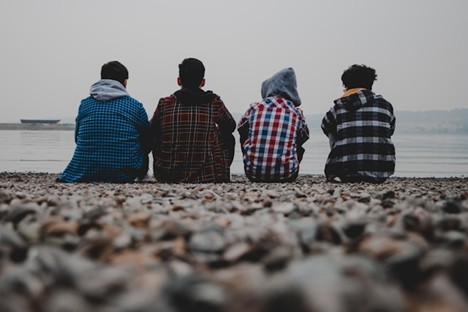
Adolescence is a period marked by rapid growth and change, both physically and emotionally. For some teens, these developmental years can be challenging, with struggles that include behavioral issues, anxiety, depression, trauma, or substance abuse. These struggles often require more than just casual intervention, and for many teens, residential treatment programs offer a safe, structured, and therapeutic environment to help them heal and grow.
Residential treatment facilities utilize a variety of therapeutic techniques to address the complex emotional, psychological, and behavioral challenges that adolescents face. These methods are designed to help teens develop healthier coping mechanisms, build self-esteem, and learn how to navigate relationships and life challenges more effectively, empowering them to regain control over their lives.
Equine therapy is a unique and highly effective therapeutic technique used in many treatment centers. It involves structured activities with horses under the guidance of a licensed therapist, helping adolescents to build trust, responsibility, and emotional awareness. This therapeutic method taps into the natural bond between humans and animals, offering a hands-on approach to healing that is particularly beneficial for teens struggling with behavioral issues, emotional regulation, and self-esteem.
The connection between a human and a horse can be deeply transformative. Horses are sensitive creatures that react to a person’s emotions, body language, and behavior, making them excellent mirrors for understanding how an individual’s internal state is reflected externally. These activities require the teen to practice patience, empathy, and communication, and provide valuable insights into how they relate to others and themselves.
Cognitive-behavioral therapy (CBT) is one of the most widely used and effective therapeutic approaches in treating teens who are struggling with mental health issues such as depression, anxiety, and behavioral problems. CBT is a structured, goal-oriented therapy that focuses on the relationship between thoughts, emotions, and behaviors. It is based on the premise that negative thought patterns can lead to negative emotional states and unhealthy behaviors, and by changing these thoughts, individuals can experience positive changes in their emotions and actions.
In residential treatment facilities, CBT is often used to help teens identify and challenge distorted or harmful thought patterns that contribute to their struggles. For example, a teen who suffers from anxiety may have the thought, “I will never be good enough,” which leads to feelings of helplessness and avoidance. Through CBT, the therapist helps the teen identify this negative thinking and replace it with more realistic and positive thoughts, such as “I may not be perfect, but I am capable of growing and learning.”
This methodology also teaches teens how to recognize the connection between their thoughts and behaviors. Someone with depression may withdraw from social activities or isolate themselves when feeling sad. CBT helps the teen understand that these behaviors are often a result of their thoughts and teaches them healthier ways to cope and engage in life.
By addressing these thoughts and behaviors, CBT empowers teens to take control of their mental health, build resilience, and gain the skills they need to navigate their emotions in a more balanced and constructive manner.

Group therapy is another central therapeutic technique used in residential treatment facilities for teens. Group therapy sessions bring together adolescents who are facing similar issues, providing a supportive and safe environment where they can share their experiences, feelings, and challenges. These sessions are typically facilitated by a licensed therapist or counselor who guides the discussion and ensures a respectful, empathetic environment for all participants.
One of the main benefits of group therapy is that it allows teens to connect with peers who are going through similar struggles, such as substance abuse, depression, trauma, or anxiety. It is common for teens to feel isolated in their struggles, but group therapy helps break down that isolation by showing them that they are not alone. In group therapy, teens learn from each other’s experiences, provide mutual support, and form bonds that can be integral to their healing process.
Group therapy also helps teens improve their social skills and practice healthy communication. They learn how to express their feelings, listen actively, and provide constructive feedback in a group setting. These skills are invaluable for developing positive relationships outside of therapy and are often a key factor in restoring self-esteem and building confidence.
Furthermore, group therapy helps teens develop a sense of community and belonging. The sense of camaraderie and shared purpose in group therapy fosters a strong support network, which can be crucial for maintaining progress long after the residential treatment program is over.
Art therapy is a creative and expressive therapeutic technique that allows teens to explore their emotions and experiences through various artistic mediums, such as painting, drawing, sculpture, or even digital art. For many teens, verbalizing their emotions can be difficult, especially when they are dealing with deep-seated trauma, grief, or anxiety. Art therapy provides a non-verbal outlet for expression, which can be especially helpful for teens who struggle to articulate their feelings.
In art therapy, teens work with a trained art therapist who guides them through the process of creating and reflecting on their artwork. The therapist helps the teen use art as a tool for self-expression and exploration. Creating art can be a cathartic experience, allowing teens to process complex emotions and gain insights into their inner worlds. For example, a teen who has experienced trauma may create art that reflects their pain, and through the therapeutic process, they can gain a better understanding of their emotions and begin to heal.
This also helps teens develop a sense of mastery and accomplishment. Completing an art project or creating something unique can boost self-esteem and foster a sense of pride. Additionally, art therapy encourages teens to think creatively and use different mediums to solve problems and express themselves, which can be empowering.
One of the many benefits is that it can be adapted to suit the individual needs of each teen. Whether the teen is more comfortable with drawing, painting, or another form of artistic expression, the therapist can tailor the approach to help the teen get the most out of their therapeutic experience.
Dialectical Behavior Therapy (DBT) is a specialized form of cognitive-behavioral therapy that focuses on helping individuals manage extreme emotions and develop healthier ways of thinking and behaving. DBT was originally developed for individuals with borderline personality disorder, but it has been widely used to treat a variety of issues, including depression, self-harm, and emotional regulation problems that teens often face.
DBT is particularly effective for teens who struggle with emotional dysregulation, impulsivity, and self-destructive behaviors. The therapy focuses on teaching four main skills:
Mindfulness: Helping teens become more aware of their thoughts, feelings, and bodily sensations without judgment. This helps teens learn how to stay grounded in the present moment and respond to challenges in a more balanced way.
Distress Tolerance: Teaching teens how to cope with difficult emotions and situations without resorting to harmful behaviors, such as self-harm or substance use.
Emotion Regulation: Helping teens understand and manage their emotions in a healthy and constructive manner, which can significantly reduce feelings of overwhelm and helplessness.
Interpersonal Effectiveness: Teaching teens how to assertively communicate their needs, set boundaries, and form healthier relationships with others.
DBT helps teens build the emotional and interpersonal skills they need to cope with stress, navigate relationships, and engage in more adaptive behaviors. It has been shown to be particularly effective in reducing self-harm, impulsive behaviors, and emotional outbursts.
Family therapy is an essential component of many residential treatment programs, as it involves the teen's family members in the healing process. Adolescence can be a time of conflict and tension within families, especially if the teen is struggling with behavioral or emotional issues. Family therapy aims to improve communication, resolve conflicts, and strengthen family bonds.
In family therapy, the therapist works with the teen and their family to address any dysfunctional dynamics that may be contributing to the teen’s challenges. By involving the family in therapy, the teen receives additional support, and the family learns how to provide a nurturing and consistent environment for the teen's recovery.
Family therapy also teaches valuable communication skills, which can help reduce misunderstandings and foster healthier relationships. This can be particularly important for teens who have experienced trauma or conflict within the family, as it helps rebuild trust and understanding.
Many residential treatment programs incorporate holistic approaches alongside traditional therapeutic techniques. These approaches focus on treating the whole person - body, mind, and spirit - rather than just addressing specific symptoms. Holistic therapies may include:
Yoga and Mindfulness Practices: These techniques help teens relax, reduce stress, and improve their ability to focus and regulate their emotions.
Adventure Therapy: Engaging in outdoor activities, such as hiking, rock climbing, or team-building exercises, encourages personal growth, teamwork, and problem-solving skills.
Holistic therapies complement traditional treatment approaches by fostering a sense of well-being, reducing stress, and promoting personal growth.
Residential treatment programs for teens offer a comprehensive and multifaceted approach to addressing the emotional, behavioral, and psychological challenges that many adolescents face. Through a combination of therapeutic techniques such as cognitive-behavioral therapy, group therapy, art therapy, DBT, family therapy, and holistic approaches, these programs provide a safe and supportive environment where teens can rebuild their lives, regain their confidence, and develop the skills they need to succeed in life.
By integrating these therapeutic methods into the treatment process, residential facilities help teens heal from trauma, manage their emotions, improve their relationships, and learn healthier ways to cope with life’s challenges. If your teen is struggling with emotional or behavioral issues, residential treatment may be a crucial step in helping them achieve lasting emotional well-being and personal growth.